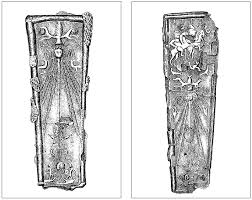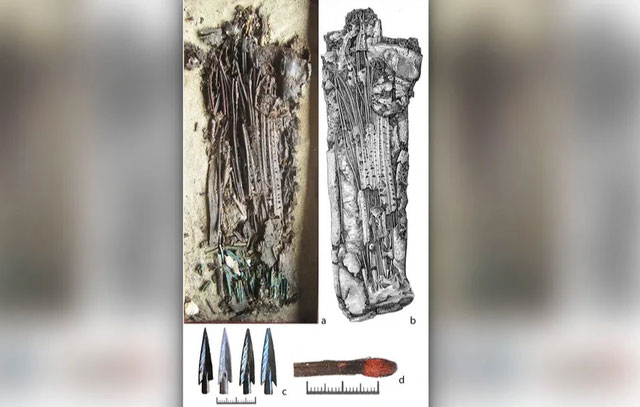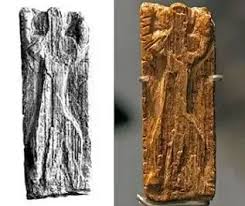The 2,400-year-old tombs belong to the Scythians – formidable and terrifying nomadic warriors .
According to an article published in the scientific journal PLOS One, researchers analyzed 45 processed leather samples from 18 ancient tombs, excavated from 14 locations in southern Ukraine.

The skin samples were all taken from burial objects in the grave. Dating back 2,400 years, the artifacts in the tomb are all “treasures” of great value. But this time, scientists had to shudder because of two “treasures” among them.
The two leather samples, coming from a quiver and arrow box, were human skin!
 A Scythian quiver unearthed from an ancient tomb – (Photo: PLOS One).
A Scythian quiver unearthed from an ancient tomb – (Photo: PLOS One).
The findings confirm the chilling claim of the ancient Greek historian Herodotus (who lived in the 5th century BC) that the Scythians used human flesh to make their objects.
“These items were an important element in the identity of the Scythian warrior, it is very likely that these sacks were buried with their owners” – Associate Professor Margarita Gleba, archaeologist from the University of Padua ( Italy), co-author, told Live Science.

The research team analyzed the skin by analyzing the proteins in the organic material, thereby determining which animal the skin belonged to.
In addition to the two models made from human skin, 43 other models are made from the skin of animals, including sheep, goats, horses and other livestock.

Archaeological evidence does not reveal why human skin was used to create these objects, but according to the famous historian Herodotus, these fearsome “headhunting” warriors often take the victim’s oily skin with a beef rib.
Greek historians also said that warriors often tied pieces of leather to their bridles as “trophies”, symbolizing the strength of men. The skin and nails of the right hand were also used as sheaths for arrow quivers.

| The Scythians flourished around 800 BC to 300 AD , with the time when these ancient mound-like tombs were built – about 2,400 years ago – being their heyday.
In addition to being terrifying as strong and fierce warriors, they were also famous for a complex civilization with outstanding technologies compared to other tribes of their time. They are also known as sophisticated gold miners and processors, as well as particularly strong developers of animal husbandry. |





